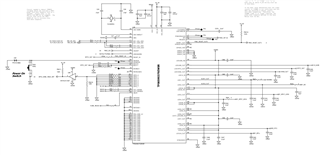Hello Support.
I use custom board based on AM5749(Processor SDK Linux RT for AM57x v05.02.00.10).
Scheme of my board was based on AM574x Industrial Development Kit datasheet.
The problem is:
On a sheet 5 we have a scheme connection of PMIC TPS6590379. Let's look at the pin gpio 7. It's pull up to 3.3v.

But if we open datasheet for PMIC we will see... VIH Max it is (VRTC+0.3). How we know VRTS it's internal LDO of PMIC and it's have 1.8v output.

My question is: Is it some ERROR in scheme? Or I didn't understood something?
BR,
Oleg


